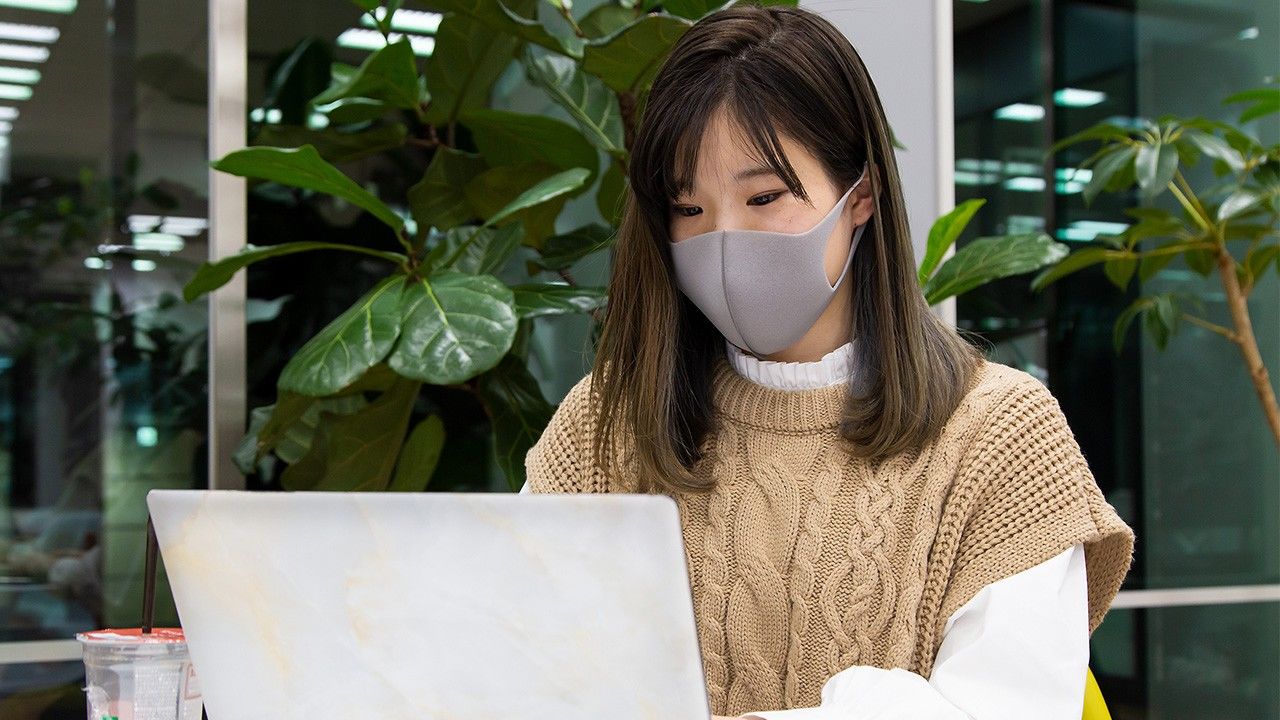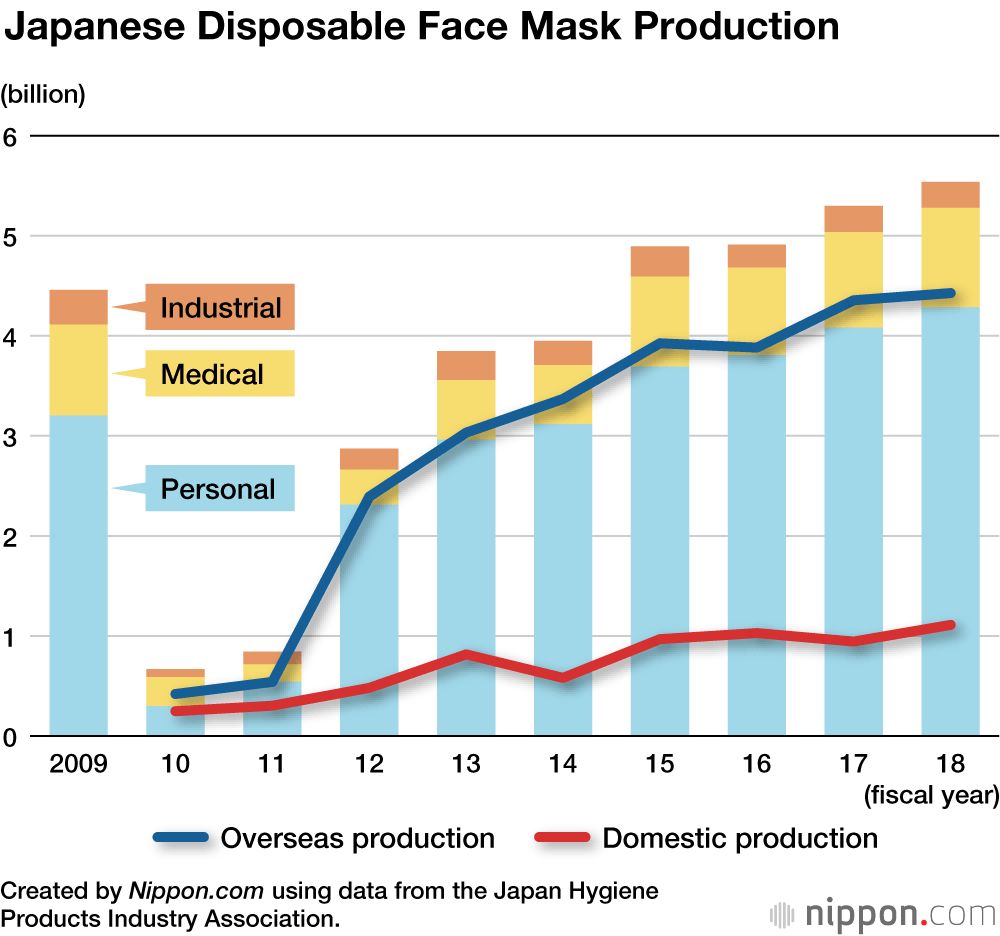
Demand for Disposable Face Masks Pushes Japanese Production Above 4 Billion Annually
Society- English
- 日本語
- 简体字
- 繁體字
- Français
- Español
- العربية
- Русский
Disposable face masks are a normal aspect of life in Japan. They can be found on public transport like trains and buses and in communal spaces such as offices and schools, and are worn by workers and patrons alike in shops and restaurants. Demand has rapidly grown over the last decade and the preventive items have come to be part of Japanese social etiquette. Although normally widely available, recently stores are struggling to keep masks in supply, as residents and tourists concerned over the ongoing coronavirus crises rush to stock up.
Surgical-style disposable face masks first appeared on store shelves in the early 2000s, aimed at people suffering from pollen allergies. Made with light, nonwoven material, they differed from the heavier, reusable gauze masks that were the norm, winning fans for their low cost and ease of use. Health-conscious Japanese also turned to the items to guard against airborne illness like the flu, and people in the throes of hay fever or the common cold increasingly slipped on masks to contain frequent coughs and sneezes as a form of etiquette.
In the last several years, Japanese production of disposable face masks has increased by leaps and bounds. In 2018, more than 5.5 billion masks of different kinds were manufactured, of which 4.3 billion were for personal use.
Making the Most of a Mask
As face masks proliferate, experts are working to raise awareness of proper use. Below are several tips for properly wearing and disposing of masks.
To ensure a firm fit, position the mask so that it covers the face from the nose to below the chin, press the wire of the nose grip over the nasal bridge, and smooth sides along the cheeks so there are no gaps. People who find it difficult to breathe with their face covered can fit the mask below the nose, but while this will contain coughs and sneezes, it will not block airborne pathogens from entering the nasal cavity.
Masks for Different Use
There is a wide selection of masks on the market to choose from, and it is important to have the right item for the job. Hay fever masks are effective for blocking pollen as small as 20 micrometers, but viruses, which are many times smaller, will pass through unchecked. User looking to ward off colds and flu should check to see if a mask is suited for the purpose before purchase. There are some masks designed to block both pollen and viruses.
One a Day
While masks are good at keeping out microorganisms, experts warn against wearing the same one too long, as moisture from breathing also provides a humid environment where microbes can flourish. For optimal protection, it is recommended that user put on a fresh mask each day. There are, however, types made from polyurethane that can be washed and reused.
Dispose of with Care
Once a mask has served its purpose, it is important to dispose of it in a sanitary manner. Germs can collect on the mask surface, and it is advised to hold the ear loops when removing the mask to avoid inadvertent contact with sickening microbes. Used masks should not be carried around, such as in pockets or packs, but should be put in a small plastic bag for later disposal or placed in a covered garbage can.
(Translated from Japanese. Banner photo © Nippon.com.)
